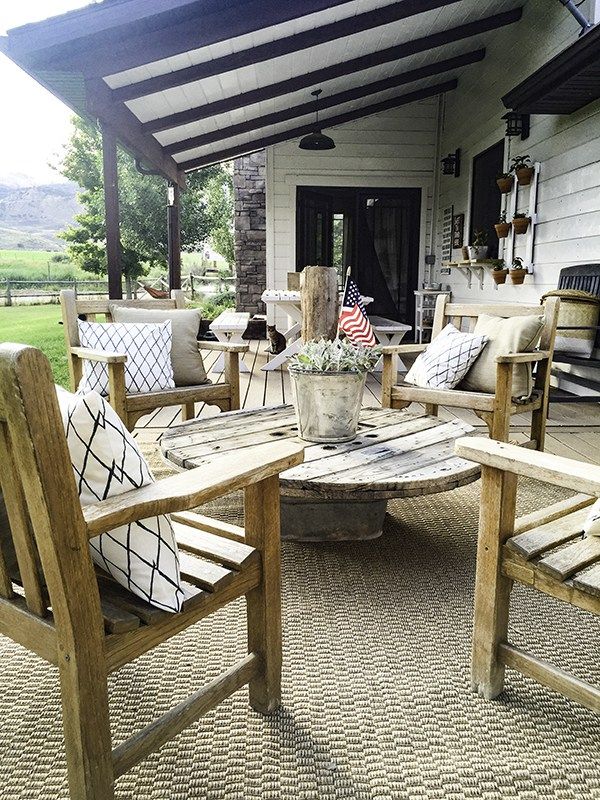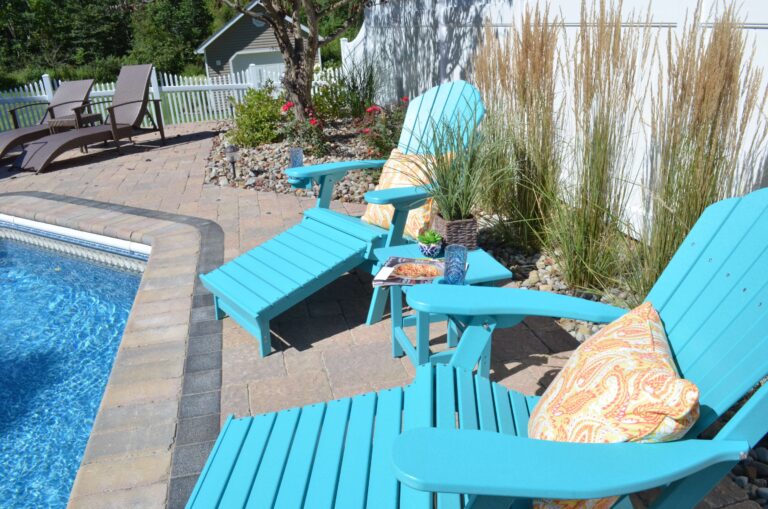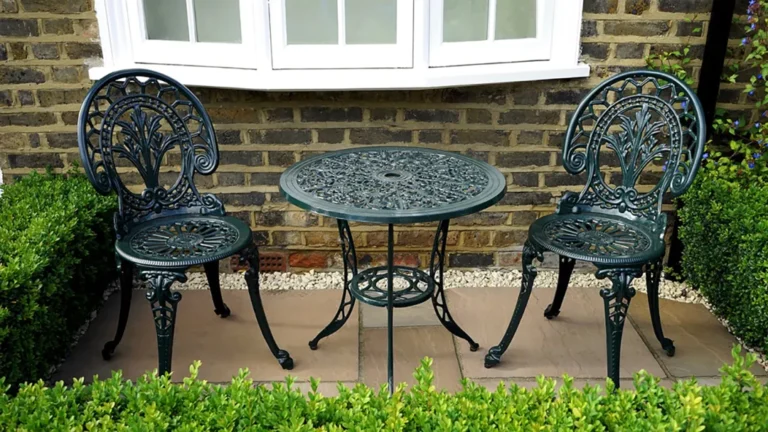Buying Guide for Patio Furniture Covers
When it comes to maintaining the longevity and beauty of your outdoor furniture, investing in high-quality patio furniture covers is essential. These covers protect your furniture from the elements, ensuring they stay in great condition for years. This comprehensive buying guide for patio furniture covers will help you navigate the process of selecting the perfect patio furniture covers, from understanding your needs to comparing the best options available in the market.

How to Choose the Right Patio Furniture Cover
Selecting the right patio furniture cover involves several considerations to ensure optimal protection and longevity for your outdoor furniture.

Consider Your Furniture Type
Different types of furniture require different covers. For example, a cover that fits a chaise lounge may not work for a round table. Identify the type of furniture you need to cover:
- Chairs and Lounges: Look for covers that are tailored to fit chairs and lounges snugly. These covers often come with tie-downs or elastic hems to secure them in place. Chair covers should protect both the backrest and the seat, while lounge covers should account for the extended length of recliners.
- Tables: Depending on the shape and size of your table, you may need a custom-fit cover. Round, square, and rectangular tables all have specific cover designs. Make sure the cover drapes over the entire table and has adjustable straps or cords to keep it secure during windy conditions.
- Sofas and Sectionals: Larger furniture pieces like sofas and sectionals require covers that can provide full coverage, including the legs. Look for sectional covers that can be attached together to form a single protective layer or individual covers for each segment.
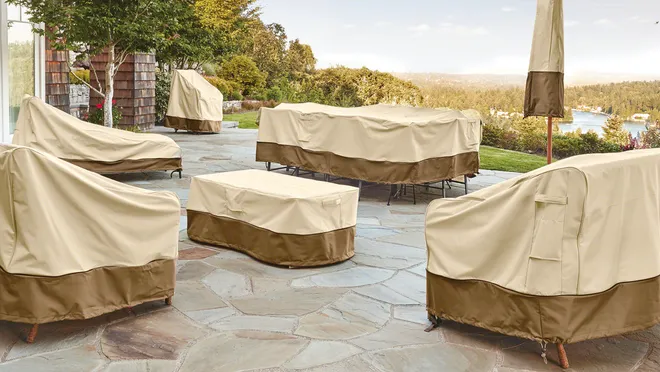
Consider the Climate
The climate in your area significantly impacts the type of cover you should choose.
- Sunny Climates: UV-resistant covers are a must if you live in an area with intense sunlight. These covers prevent fading and deterioration caused by prolonged sun exposure. Additionally, UV-treated covers can also help keep the furniture cooler, preventing heat damage.
- Rainy Climates: Waterproof or water-resistant covers are crucial to protect your furniture from rain. Look for covers with sealed seams to prevent water from seeping through. Ensure the cover has ventilation panels to reduce condensation and prevent mold and mildew buildup.

- Cold Climates: For regions with harsh winters, opt for covers made from materials that can withstand freezing temperatures and snow. These covers should also be heavy-duty to handle the weight of snow and ice. Insulated covers can provide extra protection against the cold, preventing cracking and other cold-related damage.
Consider the Material
The material of the cover determines its durability and effectiveness. Here are some common materials used in patio furniture covers:
- Polyester: Lightweight and often coated with PVC for waterproofing, polyester covers are affordable and easy to handle. They provide good protection against the elements but may not be as durable as other materials.
- Vinyl: Vinyl covers are highly durable and offer excellent protection against water and UV rays. However, they can become brittle in cold temperatures. Look for vinyl covers with fabric backing to prevent scratches on your furniture.
- Canvas: Canvas covers are strong and breathable, making them a good choice for various climates. They are also aesthetically pleasing and often treated for water resistance. Waxed canvas is a popular option for enhanced water repellency and durability.
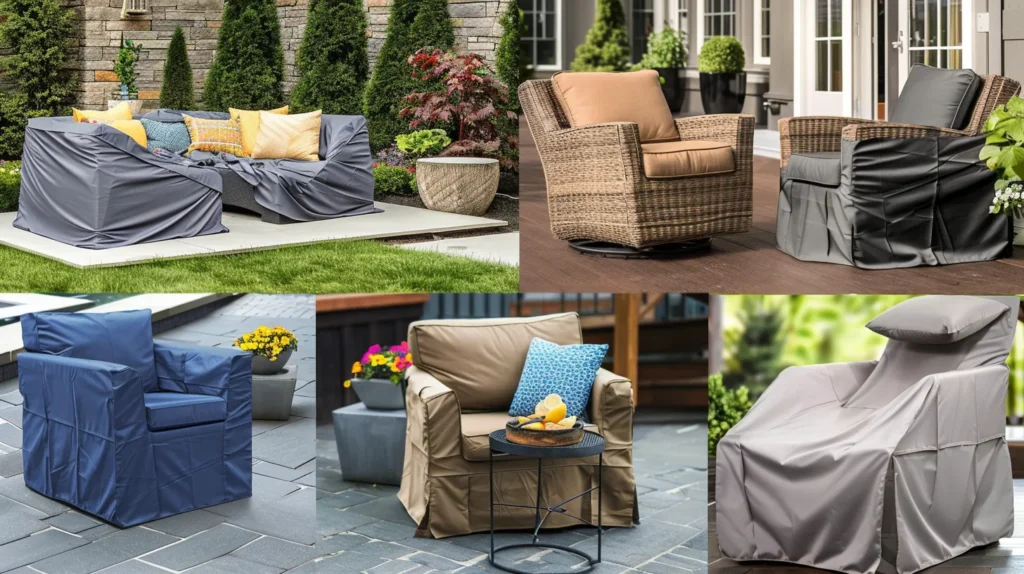
Measuring Your Furniture for a Perfect Fit
Accurate measurements are crucial for ensuring your covers fit properly. Here’s how to measure different types of furniture:
- Chairs and Lounges: Measure the height from the ground to the top of the backrest, the width from one armrest to the other, and the depth from the front to the back. For lounge chairs, include the extended length when the chair is reclined.
- Tables: Measure the diameter for round tables or the length and width for rectangular and square tables. Don’t forget to account for any extensions or leaves. If your table has a center hole for an umbrella, make sure the cover can accommodate it.

Sofas and Sectionals: Measure the height, width, and depth of the entire piece. For sectionals, measure each segment individually and consider covers that can connect. Note any irregular shapes or protruding elements to ensure full coverage.
Comparing Brands and Materials
When it comes to choosing the best patio furniture covers, brand reputation and material quality are critical factors. Here are some top brands and materials to consider:
- Classic Accessories: Known for high-quality materials and a wide range of products, Classic Accessories offers covers that are durable and well-fitted. They provide excellent UV protection, water resistance, and durability, with features like padded handles for easy fitting and removal.
- Covermates: Offers a variety of materials including lightweight and heavy-duty options. They are known for their custom-fit options and detailed product descriptions. Covermates covers are often made from breathable materials that prevent mold and mildew while providing excellent weather resistance.

- Duck Covers: Specializes in breathable, waterproof covers made from innovative materials that prevent mold and mildew buildup. Duck Covers’ patented design features multi-layer, breathable fabric that allows moisture to escape, keeping your furniture dry and protected.
Budget Considerations and Top-Rated Options
Your budget will influence the type of cover you choose. However, investing in a high-quality cover can save you money in the long run by extending the life of your furniture.
- Budget-Friendly Options: If you’re looking for affordable yet effective covers, brands like AmazonBasics and OxGord offer reliable options. These covers typically feature basic materials like polyester but provide decent protection for less exposure. While they may not last as long as premium covers, they are a good starting point for those on a tight budget.
- Mid-Range Options: Brands like Classic Accessories and Covermates offer a balance between affordability and quality. These covers often feature enhanced durability, better materials, and additional features like reinforced seams and adjustable straps. They offer good value for money, providing a longer lifespan and better protection for your furniture.
- Premium Options: For those willing to invest more for superior protection, brands like KoverRoos and Treasure Garden offer high-end covers made from advanced materials. These covers are designed to withstand extreme weather conditions and provide the best longevity. Premium covers often come with extended warranties and innovative features like eco-friendly materials and superior breathability.
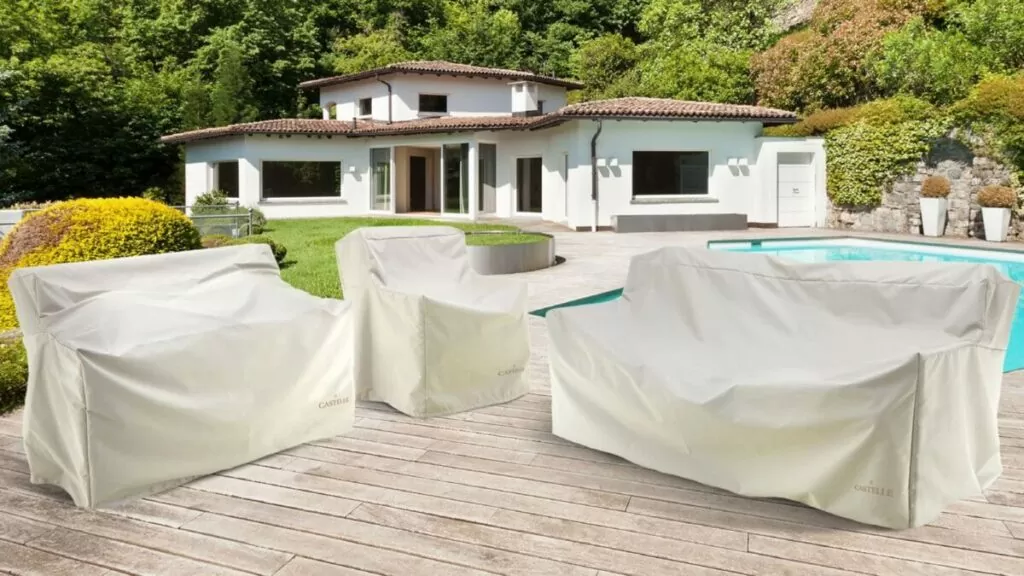
Additional Tips for Maintaining Your Patio Furniture Covers
Proper maintenance of your patio furniture covers can further extend their lifespan and effectiveness. Here are some tips to keep in mind:
Regular Cleaning
Keeping your covers clean is crucial for maintaining their protective qualities. Dirt and debris can wear down the material over time.
- Routine Cleaning: Use a soft brush or cloth to remove loose dirt and debris regularly. This simple step can prevent the accumulation of grime and extend the life of the cover.
- Deep Cleaning: Periodically, wash the covers with mild soap and lukewarm water. Avoid using harsh detergents or bleach, as these can damage the material. Rinse thoroughly and let the covers air dry completely before putting them back on your furniture.
Proper Storage
When your furniture covers are not in use, store them properly to avoid unnecessary wear and tear.
- Dry Before Storing: Ensure that the covers are completely dry before storing them to prevent mold and mildew growth.
- Fold and Store in a Cool, Dry Place: Fold the covers neatly and store them in a cool, dry place. Avoid storing them in damp or excessively hot areas, as this can deteriorate the material.
Inspect and Repair
Regularly inspect your covers for any signs of wear or damage.
- Check for Tears and Holes: Look for small tears or holes and repair them promptly. Many covers come with repair kits that make it easy to fix minor damage.
- Reinforce Weak Spots: If you notice areas that are starting to wear thin, reinforce them with patches or additional material to prevent further damage.

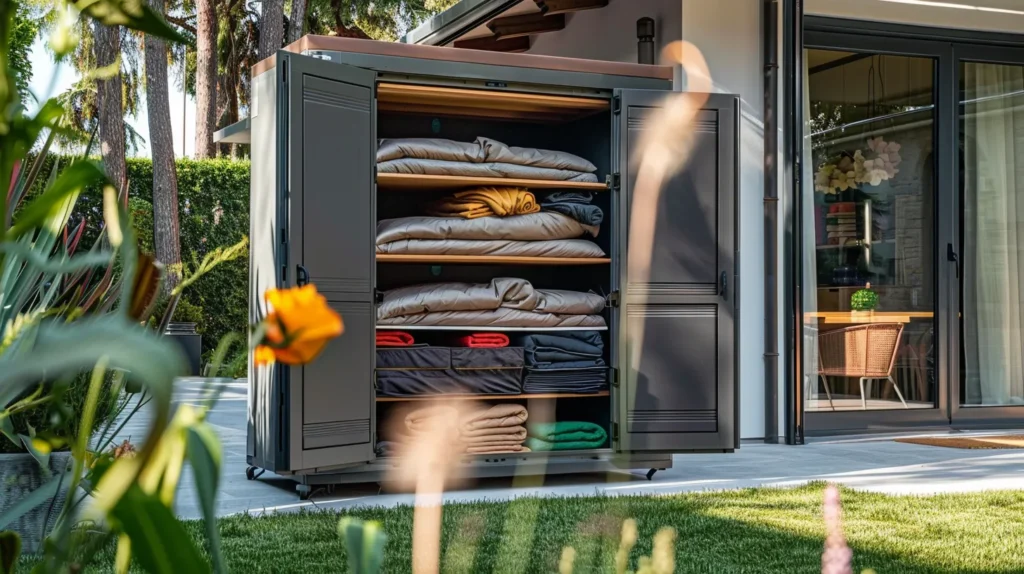
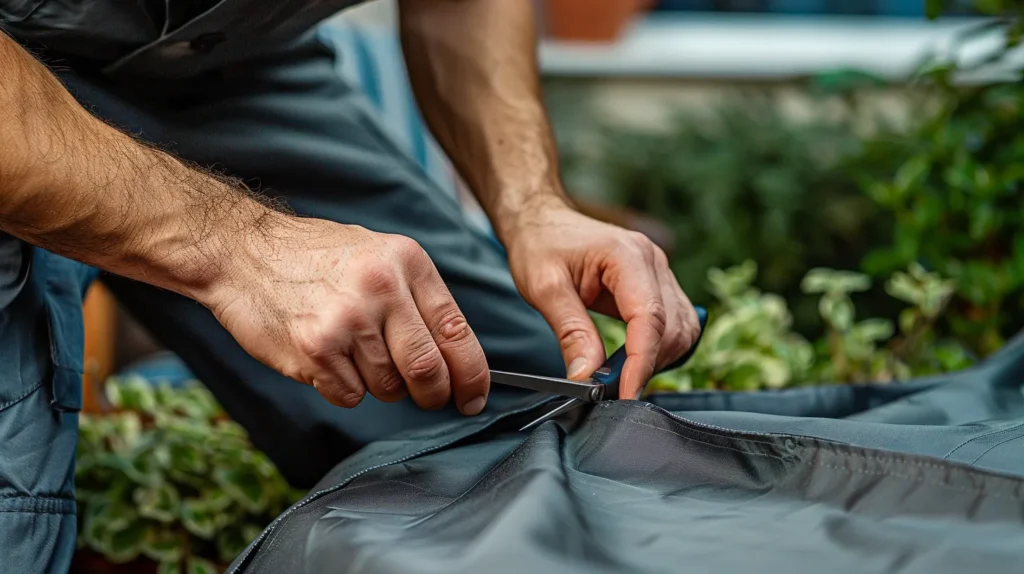
Conclusion
Choosing the right patio furniture covers involves careful consideration of your furniture type, local climate, material durability, and budget. By following this guide, you can make an informed decision that ensures your outdoor furniture remains protected and beautiful for years to come. Remember, investing in high-quality covers today can save you time, effort, and money in the long run.
FAQs
Disclosure: Our blog contains affiliate links to products. We may receive a commission for purchases made through these links. However, this does not impact our reviews and comparisons. We try our best to keep things fair and balanced, in order to help you make the best choice for you.

